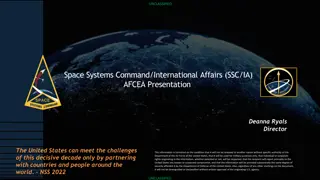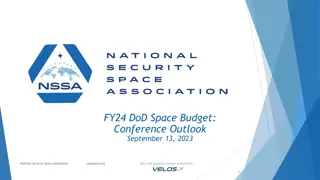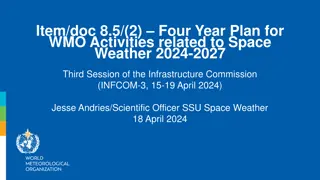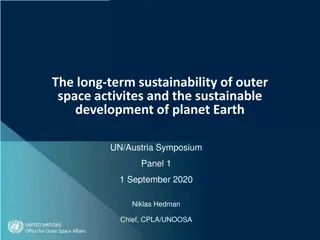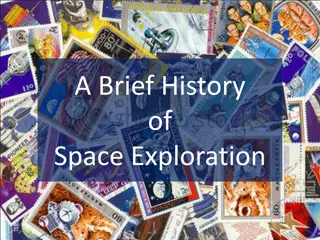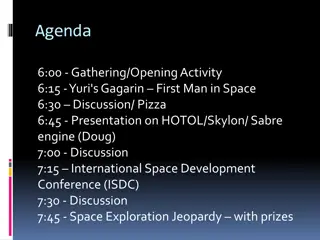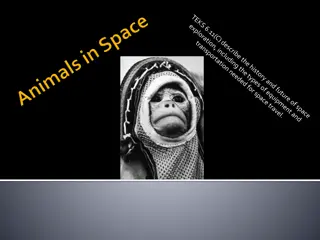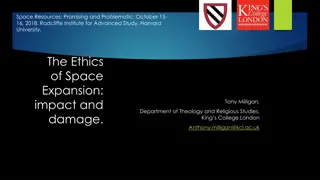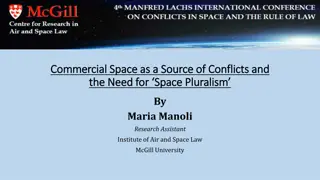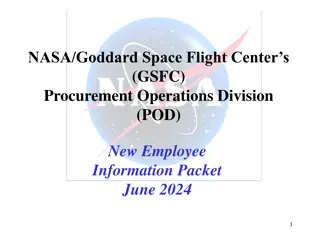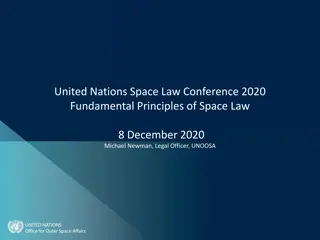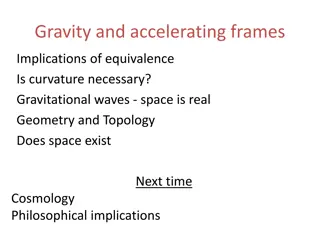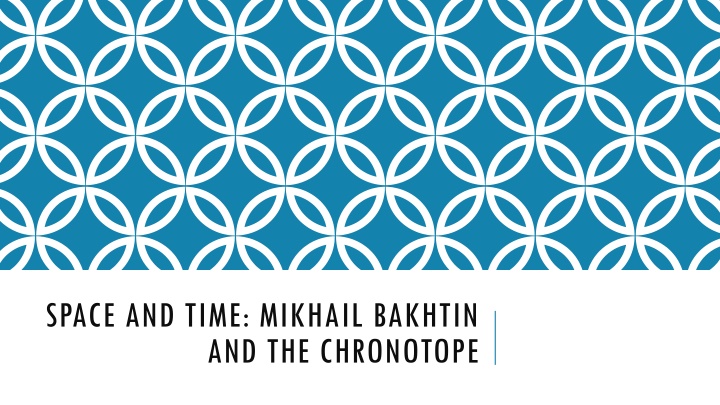
Mikhail Bakhtin and Chronotope in Literary Discourse
Explore the intricate relationship between space and time, as discussed by Mikhail Bakhtin and analyzed through the concept of the chronotope. Delve into the temporal experiences of characters, deep time narratives, and the interplay between monumental history and individual moments in literature.
Download Presentation

Please find below an Image/Link to download the presentation.
The content on the website is provided AS IS for your information and personal use only. It may not be sold, licensed, or shared on other websites without obtaining consent from the author. If you encounter any issues during the download, it is possible that the publisher has removed the file from their server.
You are allowed to download the files provided on this website for personal or commercial use, subject to the condition that they are used lawfully. All files are the property of their respective owners.
The content on the website is provided AS IS for your information and personal use only. It may not be sold, licensed, or shared on other websites without obtaining consent from the author.
E N D
Presentation Transcript
SPACE AND TIME: MIKHAIL BAKHTIN AND THE CHRONOTOPE
RECAP: PAUL RICOEUR London: monumental history and world time Big Ben: chronological time: Clock time, the time of monumental history, the time of authority-figures the same time! (106) Individual characters: simultaneous but distinct temporal experiences ( living time ) Deep time (anticipation of an almost unimaginable future); deep past. flashbacks, that, paradoxically, make the narrated time advance by delaying it, hollow out from within / the instant of the event in thought, amplify from within the moments of narrated time, so that the total interval of the narrative, despite its relative brevity, seems rich with an implied immensity. (103-4) [The] ability to move from one stream of consciousness to another the unity of a single instant onto which the narrator grafts the extension of a span of memory [which] serves to refigure time itself in our reading (104-5)
RICOEUR, CONT. Variety of relations between the characters times and monumental time. Septimus: the horror of history monumental time [gives] to clock time the train of power that transforms time into a radical threat. (108) Clarissa part of her belonging to monumental time; but a love for life which means that she can rebound from memory , and plunge into the very heart of the moment (110-11) Harry Jansen, Time, Narrative, and Fiction: The Uneasy Relationship between Ricoeur and a Heterogeneous Temporality : Clarissa has her past but also expectations of a near (her party) and a more distant future. Septimus and Peter live only with their pasts, unable to create new expectations.
RICOEUR, CONT. Ricoeur asks towards the end of his section on Mrs Dalloway in Time and Narrative II: [M]ay we speak of a single experience of time in Mrs. Dalloway? No: the destinies of the characters and their worldviews remain juxtaposed. Yes: The experience of time is neither that of Clarissa nor that of Septimus; it is neither that of Peter nor that of any other character. Instead, it is suggested to the reader by the reverberation . . . of one solitary experience in another solitary experience. It is this network, taken as a whole, that is the experience of time in Mrs. Dalloway.
MARK CURRIE, ABOUT TIME Almost all fiction operates in the narrative past tense, i.e. by the anticipation of retrospection. (29) Mrs Dalloway: Events of a single day recounted according to a rigorous linearity. But because events are mostly mental, memories constant flashback. Critique of Ricoeur: This analepsis is not really anachrony at all, but effect is anachronous because of the complex temporal structure of the events being narrated. (36) Mrs Dalloway doesn t question the forward movement of time. But it is a detailed examination of the way that we experience time. The subjective and objective aspects of time represented in this [and any other] novel may seem incompatible, but not in such a way that the forward direction of time is put into question. Phenomenologically, time is experienced as a crossed structure of protentions and retentions, but we can (and also have to) think cosmological time or clock time (so it isn t as simple as inner/outer ). Remembered events are intelligible only by reconstructing their chronological order. (76-78)
BAKHTIN, FORMS OF TIME AND CHRONOTOPE IN THE NOVEL , THE DIALOGIC IMAGINATION Time and space intrinsically linked, and configured as such in fiction. The chronotope is both the fictional world within which the events and speech acts of fiction happen, and the elements of that world that are used to reveal its temporo-spatial nature. A chronotope operates almost as a metaphor (almost, but not entirely). What counts for us is the fact that it expresses the inseparability of space and time (time as the fourth dimension of space). (84) - the intrinsic connectedness of temporal and spatial relationships that are artistically expressed in literature (84). - Time, as it were, thickens, takes on flesh, becomes artistically visible; likewise, space becomes charged and responsive to the movements of time, plot and history (84).
CHRONOTOPES AND GENRE THEORY History of Western novel, via concepts such as - the adventure novel of ordeal, - the adventure novel of everyday life, - the chivalric romance Equated in subsequent scholarship to the world view of a text. View of literary history as becoming increasingly time-concerned: absence of historical time (e.g. in Greek romance novels of 1st century (C1) AD, C12 Byzantine novels), subsequent stages (time with embryonic biographical significance in Roman adventure novel of everyday life; ancient biography; picaresque novel), C19 realism (real historical time); modernist novel where time is theme.
SIGNIFICANCE OF CHRONOTOPES ( CONCLUDING REMARKS , 250-1) 1. They have narrative, plot-generating significance. (Big Ben counts out the time frame of Mrs Dalloway a woman s life in a single day ) 2. They have representational significance represent something specific about a place or a time (e.g. we learn about the character of 1920s London) 3. They provide the basis for distinguishing generic types. distinguishing one genre from another 4. They have semantic significance e.g. they can tell us something about a character (the windows at which Clarissa and Septimus stand) Scholars distinguish major and minor chronotopes, chronotopic motifs , chronotopes of whole genres . Minor/local chronotopes motifs such as the meeting, the road, the castle, the salon, the provincial town, the threshold, the public square (or the park, the shopping street, the doctor s consulting room ) Generic chronotopes fictional worlds or general characteristics of such a world that are shared by many narratives (quest; homecoming)
Bakhtin and Popular Culture When chronotopes become semantically unproductive or inadequate in high culture [or even when they don t], they can be recycled in popular culture. Creative recycling of features of the adventure chronotope in Hollywood movies (Morson and Emerson, 1990: 371-2) Picaresque journey road movie? Marriage plot Shakespearean comedy to Hollywood romantic comedy?
A film in which Russian director uses the medium to try to present images that stop time, exploiting the capacity of film to create particular effects in relation to time and space. The mirror is a chronotope in this film: a means by which one can encounter oneself, a mechanism by which time is refracted, a metaphorical portal to other moments in time, memory and consciousness. https://www.youtube.com/watch?v=uXYfRku A3cM TARKOFSKY, MIRROR (1975)
CHRONOTOPE AND THE ROAD MOVIE https://youtu.be/0Dc0Oj08S7M the road chronotope as a metaphor "made real (Bakhtin, 84) A typically spatial effect of the road chronotope: the "snowballing" effect (in Thelma and Louise, for instance), with actions gaining momentum as the protagonists drive across a space that is anything but empty. A chronotope that intersects with the road: that of chance. The time of random contingency: "Should something happen a minute earlier or a minute later, that is, should there be no chance simultaneity or chance disjunctions in time, there would be no plot at all" (Bakhtin, 92).
THE CHRONOTOPE AND LOUNGE TIME IN MEMENTO Producer sought out locations that were no- places , where a character might get, in director Nolan s words, lost in a landscape. Leonard is trapped in what Vivian Sobchack calls lounge time represented by chronotopic structures like cocktail bars or hotel rooms threats to the traditional function, continuity, contiguity, and security of domestic space and time. They substitute for and fragment into broken status the nurturant functions of another . . . chronotope . . . : the home (Sobchack, 'Lounge Time', 1998: 156-7) Substitute impersonal, incoherent, discontinuous and rented space for personal, intelligible, unified, and generated space (1998: 158)
BART KEUNEN, CITED IN BAKHTINS THEORY OF THE LITERARY CHRONOTOPE: REFLECTIONS, APPLICATIONS, PERSPECTIVES, 7-8 1) Micro-chronotopes (Ladin, 1999: 215). Units of language (with time/space properties) smaller than the sentence charged with chronotopic energy . 2) Minor chronotopes (Ladin s local chronotopes) motifs such as the meeting, the road, the castle, the salon, the provincial town, the threshold, the public square. 3) Major or dominant chronotopes units of narrative that leave the reader with an overarching impression (the day in Mrs Dalloway? The amnesia trope in Memento?) but doesn t define a genre. 4) Generic chronotopes fictional worlds or general characteristics of such a world that are shared by many narratives (and are constitutive of their genre e.g. the quest, the homecoming). [The single day novel actually a (small) subgenre cf.Ulysses,McEwan s Saturday??]
KEUNEN, CONT. 5) Plot chronotope classes (even beyond e.g. the quest): teleological chronotope (whole plot moves towards a final moment), in which suspense created by a move towards or away from equilibrium/ conflict mission chronotope (conflict bracketed by two states of equilibrium adventure novel, fairy tale, fantasy) regeneration chronotope (series of conflicts overcome in a final equilibrium) degradation chronotope (initial equilibrium becomes lost in an unresolved conflict tragedies) Dialogical chronotope (network of conflicting situations and junctions that communicate with each other). Conflicts less important than the Kairos , the critical, decisive moments found in novels since the C19. Tragic chronotope (conflict characters dominate) Comic chronotope (balanced characters dominate) Tragicomic chronotope (no dominating characters)
HENRI BERGSON, TIME AND FREE WILL Duration: the form which the succession of our conscious states assumes when our ego lets itself live, when it refrains from separating its present state from its former state (100). as happens when we recall the notes of a tune, melting, so to speak, into one another (100). Feelings are not distinct or discrete; real time (duration) is only encountered via intuition. Every moment of duration overlaps with every other. Influences philosophers like Max Scheler, psychiatrists like Eugene Minkowski and psychoanalysts like (Woolf s sister in law) Karin Stephen.
BERGSONS TIME AS PSYCHOLOGICAL Duration: the varying speed at which the mind apprehends the length of experiences according to their different intensities, contents and meaning for each individual. [So radically HETEROGENEOUS!] Bergson s view of time removes the external standard and replaces it with what the internal sense of time reveals that real time is that in which people live and it is qualitative, not quantitative in nature (Mary Ann Gillies, Bergsonism: Time out of Mind , A Concise Companion to Modernism, 102).
In the Bergsonian construction of reality, though real living goes on in the indivisible realm of dur e (duration), this world is broken into segments in order to explain, analyze, and even understand the nature of experience. The conscious reconstruction of our experiences [e.g. via images] distorts them, but this distortion is inevitable because of the impossibility of ever halting the flow of dur e and because of the equally inevitable human need to violate this flow in order to assert our will over the natural environment (Mary Ann Gillies, ibid.) Images can only reveal duration indirectly; it is only apprehended through intuition and imagination. Does reality have an intrinsic structure or is it an incessant shower of innumerable atoms (Woolf, Modern Fiction )?
Intellect Intuition inert objects movement immobility change spatialized time ( clock time ) time in itself (duration) being becoming (Donato Totaro, Time, Bergson and the Cinematographical Mechanism , Offscreen, vol. 5, issue 1 (January 2001))

![Read⚡ebook✔[PDF] Linking the Space Shuttle and Space Stations: Early Docking Te](/thumb/21519/read-ebook-pdf-linking-the-space-shuttle-and-space-stations-early-docking-te.jpg)
![READ⚡[PDF]✔ Emerging Space Powers: The New Space Programs of Asia, the Middle Ea](/thumb/21554/read-pdf-emerging-space-powers-the-new-space-programs-of-asia-the-middle-ea.jpg)


